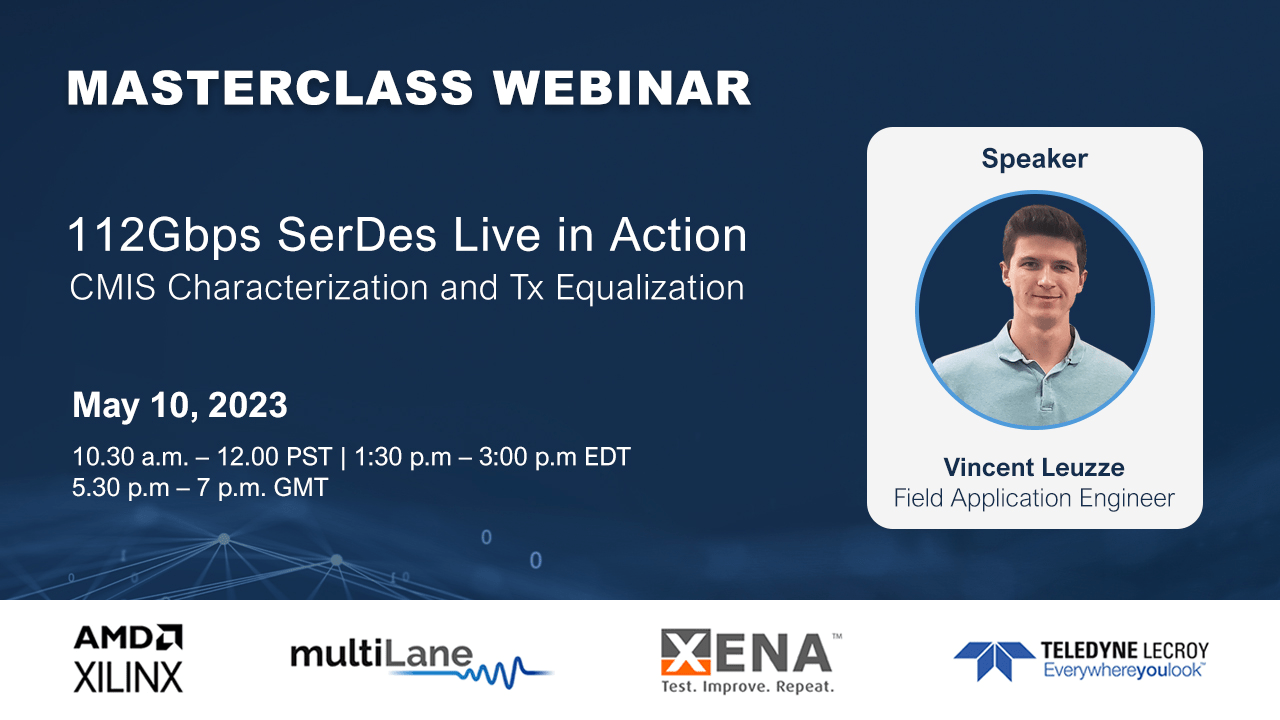A Webinar Featuring MultiLane, Hosted by Xena Networks

112G SerDes – Ready. Set. Go!
As the complexity of ensuring interoperability increases, customers will look to solutions that make that process simpler. Ideally, the goal is to make interoperability testing as easy as “Ready. Set. Go.”
Join us on May 10 when AMD, MultiLane, Teledyne LeCroy & Xena Networks demonstrate how this can be done with three key tests for optimizing the performance of devices handling 112G SerDes Ethernet.
1. CMIS Interoperability
2. Tx Equalization
3. AN/LT optimization
A Q&A session will follow the presentations.
1. CMIS Interoperability
Why is this test important?
The signal complexity at 112Gbps SerDes requires that developers need to adhere to more standards than ever before. As a result, the Common Management Interface Specification (CMIS) implementation has become a core component of ensuring smooth interoperability.
What will we demonstrate?
We will provide an overview of CMIS-driven interop validation via a practical demonstration. You will also learn how the industry can benefit from a simpler CMIS validation process in the face of increasing complexity.
Presenter: Vincent Leuzze (Field Application Engineer, MultiLane)
2. Tx Equalization
Why is this test important?
The complexities of 112Gbps SerDes increase the risk of error. Tx/Rx equalization is a crucial aspect of ensuring efficient signal transmission at these speeds.
What will we demonstrate?
In this section of the webinar we will explain the complex equalization techniques required and highlight how best to ensure a good Bit Error Rate on an AMD adaptive SoC using an Active Loopback.
Presenter: Vincent Leuzze (Field Application Engineer, MultiLane)
3. AN/LT Optimization
Why is this test important?
Auto Negotiation (AN) allows network ports to establish a link via an electrical cable at the highest speed supported by both devices, while Link Training (LT) is used to establish reliable links with minimum data loss i.e. a low BER.
What will we demonstrate?
Firstly, you will see how 2 link partners negotiate to highest common denominator speed, and how to test and verify the Auto Negotiation communication between 2 devices.
In the second part of the demonstration, you will see:
- How link training is used to optimize equalizer tab settings to achieve the lowest possible BER
- What information the 2 endpoints communicate,
- How the link training algorithm tries different equalizer tab settings to optimize BER,
- How to find the Boundaries levels of each of the Tab settings and
- How this helps users to optimize and test their LT implementation.
Presenter: Craig Foster (Product Line Manager, Teledyne LeCroy)
Q&A Session
You are welcome to submit questions during the webinar. If possible, please indicate which the speaker or company to whom your question is directed.